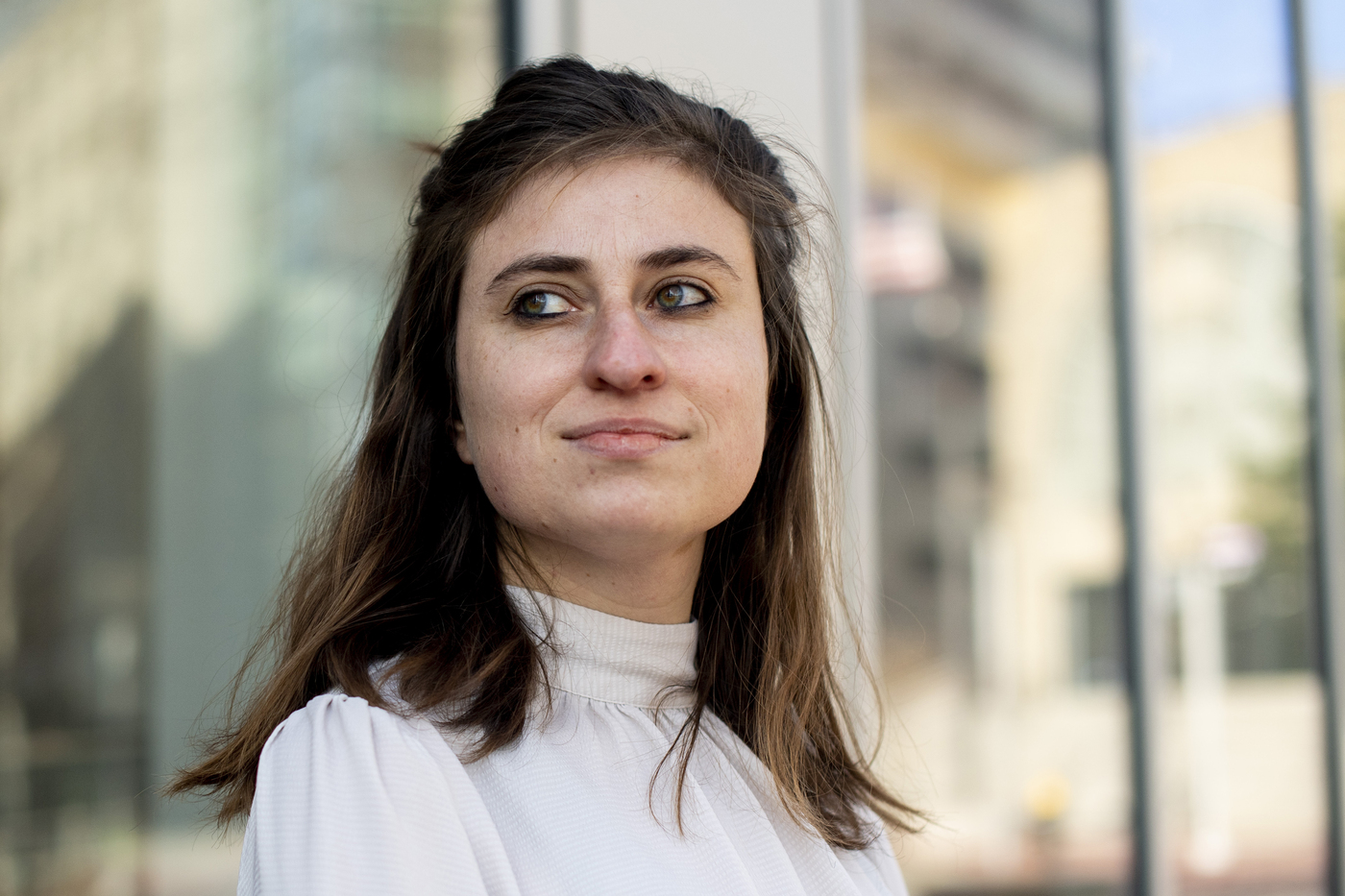Not dating your best friend’s ex may put you at higher risk of an STI

Don’t date your friends’ exes. That’s the unspoken golden rule of high-school romances.
But while this might be a good habit for maintaining friendships, researchers in Northeastern’s Network Science Institute recently found that not dating your friends’ exes actually increases the likelihood that teenagers will be exposed to sexually transmitted infections compared to dating people at random.
“Adolescents are about 75 percent less likely to date someone if that person dated their friend in the past,” says Cassie McMillan, an assistant professor and researcher in the Network Science Institute who co-authored the findings, which were published in the journal Social Networks.

Cassie McMillan, assistant professor of sociology, criminology, and criminal justice. Photo by Ruby Wallau/Northeastern University
Accounting for that statistic, McMillan and her team found that STI exposure among high schoolers is not merely a numbers game, as common sense would have it. In other words, transmission is not as simple as saying that teenagers who have sex with more people are more likely to contract STIs.
“Alternatively, what we found is that because adolescents adhere to this social norm, more people become indirectly connected in such a way that allows for more peers to reach each other,” says McMillan.
That is, with less overlap among romantic partners, teens’ dating networks are larger, and include more people.
“Because of the friendship norm, it’s not so important who your partner is. It’s more important who your partner’s partners have been in the past, and who their partners were too,” says McMillan. “Even adolescents who reported only having one or two partners can still be indirectly connected to a lot of folks.”
To conduct their research, McMillan and her colleagues used data collected from 2,000 high schoolers in the Netherlands between 2014 and 2015. Students were asked twice over the course of the year about their sexual partners and platonic friendships.
For the study, McMillan and her team observed only same-sex friendships and heterosexual romantic relationships because of the information available in the data set.
Most of the students reported having one or two sexual partners, but what McMillan found surprising was that even with only one or two partners, these students were connected to as much as one-third of their classmates.
“Even though these students weren’t sleeping with a third of the school, they were still indirectly linked to that many of their peers if an STI outbreak occurred,” McMillan says.
The researchers used data from the Netherlands simply because that data was already available. McMillan says the fact that the individuals in this sample were Dutch teenagers is not necessarily significant.
“We think the findings would be more similar than different if we had the data to carry out the same study in the U.S.,” she says.
In populations where maintaining friendship is not a primary concern when selecting sexual partners, though, the correlation between the number of partners and the level of risk is more direct, McMillan says.
Most adult populations fall into this category, McMillan says. “Friendships are apt to be less salient and crucial to everyday life as is the case with adolescents,” she says. “We know that the popularity contests of high school don’t quite scale up to adulthood.”
Most models that map STI transmission represent adult populations where more sexual partners equals a higher risk of infection, McMillan says. But as her research demonstrates, these models are not applicable to all populations.
Accurate models are important for crafting effective interventions, and as such, preventive techniques that could help an adult population might not work in adolescent populations.
For example, McMillan says that a targeted approach that aims to educate high-risk individuals, such as sex workers, would work in populations where friendship less directly affects the selection of sexual partners.
But for high schoolers driven by loyalty to their friends, McMillan says preventive techniques should look a little different.
“Let’s say a high school has a limited budget for a prevention program. If they were to randomly select every tenth student in the school and ask questions about their sexual history, that would be an effective and less taxing way to collect information than surveying the entire school,” she says.
Similarly, McMillan says that random acts of intervention are successful among this type of population, eliminating the need to seek out high-risk individuals.
For media inquiries, please contact media@northeastern.edu.